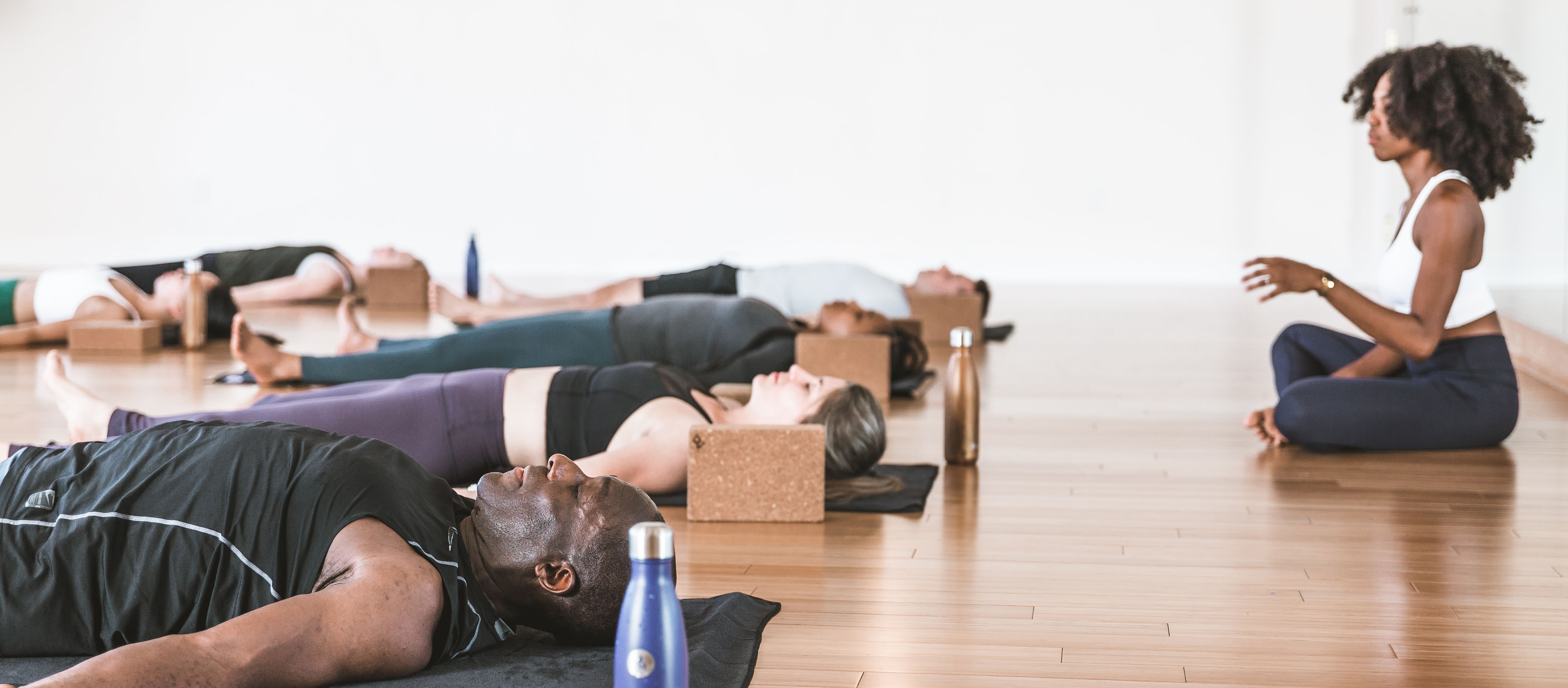Savasana (shah-VAH-sah-nah or shih-VAH-snah) is the final resting pose at the end of almost every yoga practice – including the Modo Yoga series.
Savasana is likely the first Sanskrit word learned by yoga students, and it often quickly becomes their favourite.
It brings with it images of calmness, rest and relaxation, of drifting away, and sometimes even napping, as a well-exercised body and relaxed mind settle into the mat at the end of a practice.
The word itself can be broken down into “asana” (posture) and “sava” (corpse).
Savasana, quite literally, means “Corpse Pose” – which doesn’t exactly bring such peaceful images to mind, does it?
But that’s the point.
Not only is a corpse’s physical body perfectly still; its mind is still, too. Completely still. Not awake and thinking about the just-finished yoga practice or lists of things to do after class, not asleep and dreaming.
Just still.
This complete stillness in mind and body is the goal of savasana, which for most people makes it both the easiest pose physically, and the most challenging pose mentally and/or emotionally.
A lot happens in our bodies during savasana, despite (and because of) our stillness. Savasana offers the body rest after a yoga practice.
It is a time when our musculo-skeletal and nervous systems integrate the practice we just finished; a time when the fight-flight-or-freeze states that typify the majority of our daily lives take a back seat and the rest-and-digest mechanisms in our parasympathetic nervous systems take the driver’s seat; a time when our digestive and immune systems function best; and, a time when our minds become more calm and clear.
But, as is true with all kinds of meditation (and savasana is meant to be a type of mediation practice), it’s almost impossible to not think.
Our brains want to think…it’s what they do!
On the mental level, savasana provides the opportunity to take a break from active thinking and be present in the moment with the sensations of the body: the sweat trickling down our foreheads and ribcages, the rise and fall of our bellies as we breathe, the support of our mats beneath us.
The challenge is to turn off active thinking and simply observe these sensations without letting yourself get caught up in the stories that might accompany them.
For example, the warmth of the room and sweat on your body could easily bring memories of the time you spent on that beach during your vacation last winter, and of how delicious those piña coladas were, and about how you can’t wait for your trip to Cuba next month and…
To be in stillness and silence with ourselves is often a very difficult thing to do, which is one of the reasons why so many of us tend to keep ourselves so busy — to avoid feeling the discomfort that can arise when we are still.
But savasana provides the chance to step back and just notice what we’re thinking and feeling without clinging to those thoughts and feelings.
To observe them without judging them as either good or bad, or pleasant or unpleasant, but instead just letting them be what they are.
The physical and mental benefits of savasana are profound in their own right, but savasana is also a sacred time for some practitioners — a time when they are able to let go of emotions that have been trapped in their bodies, or to feel connected to something larger than themselves.
This is why, as yoga teachers, we invite our students to stay in savasana for as long as they can, and to resist the impulse to jump up and rush out the door two seconds after the teacher says “namaste” so they can dive back into crossing things off their lists of things to do.
It is also why we ask them to leave as quietly as they can when it is time to go, to maintain as quiet a space as possible for as long as possible for those who have chosen to remain present with themselves on their mats in savasana.
The Modo Yoga series is a wonderful sequence of poses designed to stretch and strengthen the entire body, but it is final savasana that many teachers would consider one of the most important poses in the series, as the main purpose of the entire practice is really to prepare the mind and body for the myriad benefits of Savasana.
I hope this post has inspired you to view Savasana from a new perspective and invite you to explore its gifts more deeply as you continue your yoga journey.
— namaste, Andrew
Yoga was the anchor in the storm when Andrew Jobe‘s marriage dissolved, and he now strives to help others through yoga and Reiki in the way that they helped him. He lives in Peterborough, Ontario, Can. with his family, where he runs his own business guiding fellow yogis and yoginis and offering Reiki treatments, writing and editing services, bird surveys, and birdwatching courses. His favourite asana is Reclining Pigeon.
